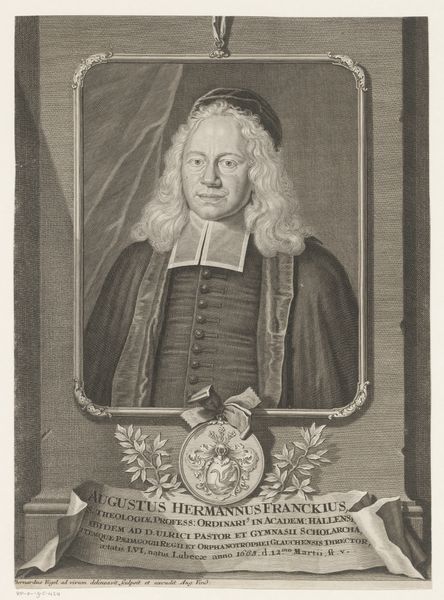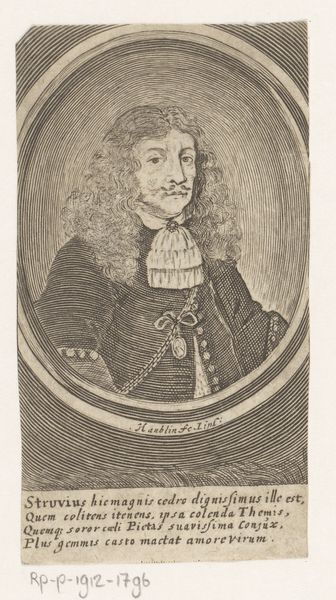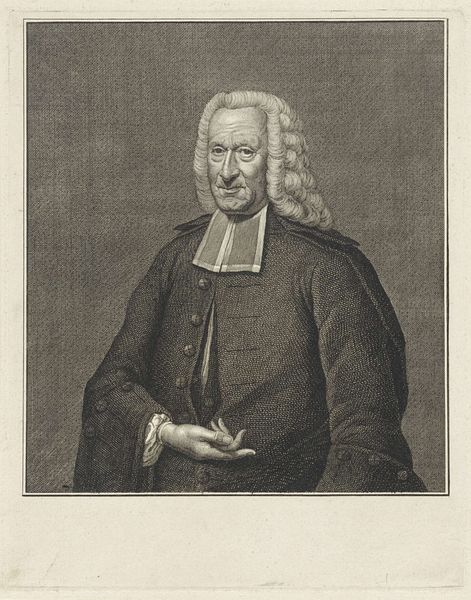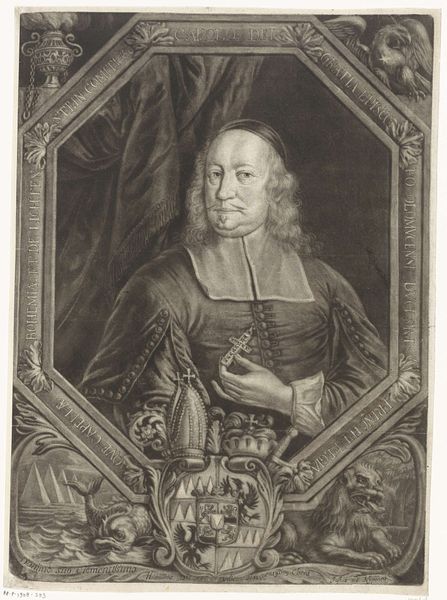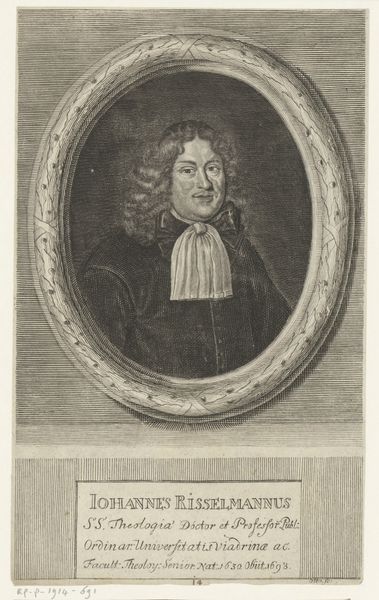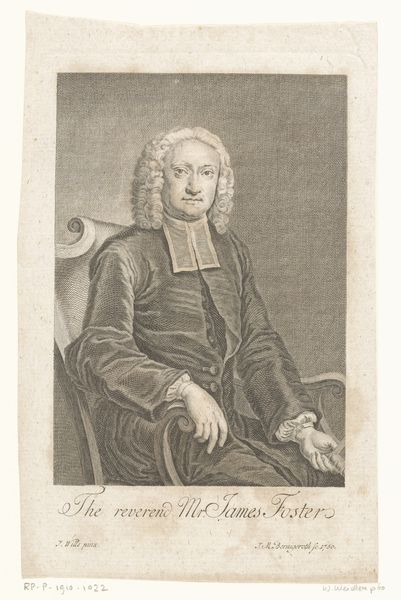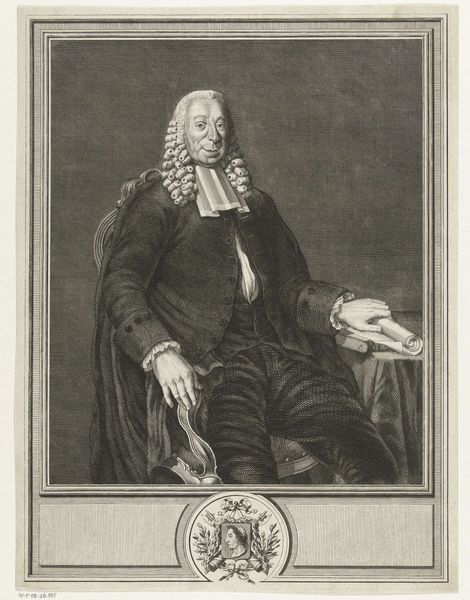
painting, oil-paint
#
portrait
#
baroque
#
painting
#
oil-paint
#
painted
#
oil painting
#
portrait head and shoulder
#
underpainting
#
painting painterly
#
history-painting
#
portrait art
#
fine art portrait
Dimensions: height 99 cm, width 78.5 cm
Copyright: Rijks Museum: Open Domain
Curator: What a wonderfully somber fellow. There’s something about the muted palette that’s pulling me in. Editor: Indeed. Here we have a portrait of Willem van Outhoorn. It's an oil painting dating back to somewhere between 1691 and 1710, currently housed here at the Rijksmuseum. It’s attributed to an anonymous artist. Let's dive into what makes it tick, materially speaking. Curator: His gaze… it’s as if he knows something we don’t, and he’s not sharing. Or perhaps he's simply tired after a long day of… well, whatever a man of his station did back then! I wonder, does his jacket look like a tightly fastened metaphor to you? It strikes me that it is buttoned so high. Editor: Possibly. Those rows of buttons draw the eye, don't they? Mass production of uniform buttons at that scale really took off in the 18th century, so it hints at something about Outhoorn's status and wealth but also, subtly, about Dutch trade routes to secure materials to make such fine wares and, more directly, his professional status requiring this apparel. Curator: Absolutely, those tiny brass planets orbiting his center… I love how the artist plays with textures – the almost imperceptible sheen on his dark jacket against the flatter background, that feels intentional. But who was Outhoorn and how did he relate to the world of his buttons? Editor: Ah, excellent question! Van Outhoorn was Governor-General of the Dutch East Indies. So those buttons... they represent the power and machinery of Dutch colonialism! This painting likely functioned as both a status symbol, intended for a European audience, and as a tool of self-fashioning by the sitter. Curator: Which, given our current context, does cast quite a different light, doesn’t it? Now that shadow under his lower lip seems heavy with the weight of empires. It's so easy to look past the materials to see "the person". But maybe his story lives inside each stroke. It is worth paying attention to how this history made its way into the fine art. Editor: Precisely! Thinking about the cost of pigments, the canvas… it all speaks volumes about value and labor in that historical moment, as it does now, here in the museum's exhibition rooms. Curator: What a revealing, buttoned-up fellow! Editor: Yes, food for thought. Thanks for painting that image a little differently, as paintings tend to do for those willing to reflect.
Comments
rijksmuseum about 2 years ago
⋮
The highest-ranking Dutch East India Company (VOC) official in Asia was the governor-general. He presided in the Castle of Batavia (now Jakarta, Indonesia), a fort built by the Dutch. The assembly hall in the Castle of Batavia was the centre of Dutch power in Asia. The walls were hung with portraits of all of the governors-general. Most of the 18th-century examples shown here were painted in Asia.
Join the conversation
Join millions of artists and users on Artera today and experience the ultimate creative platform.
